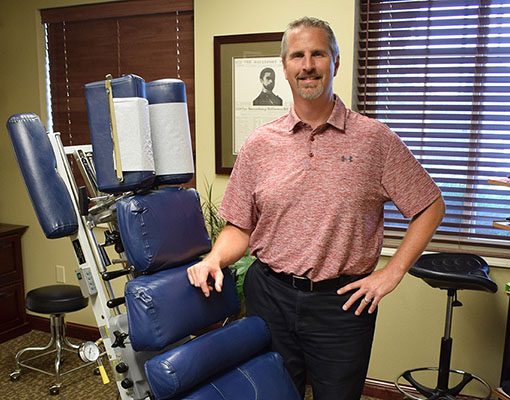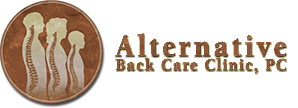Causes and Treatments
Knee and Lower Leg Pain
SPRAINS/STRAINS OF KNEE

There are different areas of sprains/strains in the knee. A sprain is an injury to a ligament and a strain is an injury to a muscle/tendon. Injuries fall into two main categories: CHRONIC = pain over three months or ACUTE = pain from injury up to three months. These injuries are graded as first, second, or third-degree. Our office deals with first and second-degree injuries. Third-degree are referred out for orthopedic consultation. Following is a list and explanation of a few of these conditions.
Medial Collateral Ligament

This ligament is located on the inside of the knee, which connects the two leg bones (femur and tibia) together. It is injured in overuse and traumatic forces. Our office treats these injuries with joint manipulation, if necessary, as well as interferential current, ultrasound, low level laser therapy, ice/heat, rehab exercises, and bracing.
Lateral Collateral Ligament

This ligament is located on the outside of the knee, which connects the two leg bones (femur and tibia) together. It is not injured as often as the medial collateral ligament. Treatment consists of joint manipulation, if necessary, as well as interferential current, ultrasound, low level laser therapy, ice/heat, rehab exercises, and bracing.
Anterior Cruciate Ligament

This ligament is located on the front part of the knee joint. It can be injured in noncontact activity such as with sudden stopping, which causes the knee to hyperextend backwards. It is most often injured with a traumatic force. Since this ligament has a large blood supply, swelling develops quickly and it is very painful.
If the patient is an athlete, surgery is usually the only option. For non-active people we can treat these injuries with rehab exercises and procedures, bracing, ice-heat, and low level laser therapy.
Posterior Cruciate Ligament

This ligament is located on the back part of the knee. It is not commonly injured. Treatment would consist of procedures found in treating the lateral collateral ligament.
Meniscal Tears

The meniscus is the cartilage tissue found between the bones that make up the knee joint (femur and tibia). It is divided into two halves: medical meniscus (inner half) and lateral meniscus (outer half). Meniscal tear injuries are usually the result of the knee being compressed and rotated simultaneously. This area does not have a very good blood supply and as a result swelling develops over a period of hours. There may be episodes where the knee “locks�. Care in our office consists of joint manipulation, when necessary, interferential current, ultrasound, low level laser therapy, ice/heat, rehab exercises, and bracing. Arthroscopic surgery is performed with serious injury.
CHONDROMALACIA PATELLA

Pain is located underneath the patella (kneecap) and is worse with going up and down steps. Sometimes a “grinding� sensation is noted under the patella. This is usually due to a tracking problem where the patella does not ride correctly in the groove that was made for it. Treatment consists primarily of rehab exercises and spinal and joint manipulation.
BURSITIS

Contrary to popular belief, this is not a condition that only affects older people! Everyone is at risk, especially athletes. Bursae are fluid-filled sacs found in most joints. The knee has a large quantity of bursae. With improper motions or repetitive stressful motions to the knee, these bursae become swollen and can sometimes rupture, leading to “water-on-the-knee�. It is usually treated with rest, ice, and modification of activity.
OSGOOD-SCHLATTER'S DISEASE

The patient is most often a young athlete. It occurs during the growth years when repetitive stresses on the knee cause a tendon to become inflamed and probable avulsion fracture to occur. The pain is located on the bone just below the kneecap. Most often a large bump will be noticed that will be present the rest of his/her life. It is most common in adolescent males. Management in our office consists of rest, ice, modification of activity, and low level laser therapy.
SHIN SPLINTS

This is noted as a deep ache in the lower leg that is usually brought about by walking or running on hard surfaces and is often worse with weight bearing. The pain is most often on either side of the tibia. Stress fractures are to be differentially diagnosed but are usually painful on the tibia bone itself. If care for shin splints by using rest, ice, and other modalities in our office does not improve the condition, a bone scan is ordered to rule out stress fracture. Wearing proper shoes is extremely important.
Why Choose Us?

Because Dr. Bunkers LOVES his job!
-
We do not
require lengthy treatment plans
-
We treat
neck and back problems, headaches, joint problems of the arms and legs such as shoulders, knees, etc.
-
We treat
the entire family from infants to senior citizens
-
We focus
on treating the problem and getting you functioning as soon as possible
-
We help
with your insurance questions
-
We will
refer out for second opinions if your condition does not improve
